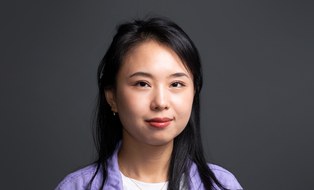Eye Movement Patterns in Complex Tasks: Characteristics of Ambient and Focal Processing
 © RTG 2323
© RTG 2323
Doctoral Researcher
NameYuxuan Guo M.Sc.
Send encrypted email via the SecureMail portal (for TUD external users only).
Research Training Group 2323
Research Training Group 2323
Visiting address:
Institutsgebäude S7A
Raum / Room 205
Georg-Schumann-Str. 7a
01187 Dresden
|
Supervisor: Prof. Sebastian Pannasch |
Co-Supervisor: Prof. Martin Schmauder |
Research Topic
The work context of CPPS is characterized by cognitively challenging tasks. Performing a task likely requires visual attention mechanisms for constantly gathering and refining task-relevant information. Assessing operators’ visual attention and cognitive processing while they engage in complex tasks allows to add to the current understanding of the work processes in these complex systems. An analysis of eye movements can support such assessments.
Analyzing the time course of eye movements during the perception of natural scenes indicates that people progress through two distinct modes of visual processing: an ambient mode, serving global spatial orientation in the visual environment, followed by a focal mode, facilitating a more elaborated and object-centered analysis. However, the shifts between ambient and focal processing modes have mainly been identified relative to external changes in the environment, such as relative to the onset of various visual stimuli but also following scene cuts or subjective event boundaries in dynamic stimuli. The results so far do not allow conclusions about the nature of the two processing mechanisms beyond the influence of externally triggered events. It would be interesting to see whether such attentional shifts can also be identified within and across the processing of tasks. To investigate this issue, the following two studies were conducted.
- In our first study, shifts in ambient and focal processing were investigated in an active task solving paradigm. The used Rubik’s Cube task is a multi-step goal-driven task (i.e., assembling a Rubik’s Cube), in which subjects needed to perform a series of sub-tasks. We investigated the time course of eye movements at multiple levels of Rubik’s Cube task completion, including when there were no external changes to the task environment but when internal representations of the task were hypothesized to change (i.e., shifting between different sub-tasks). The results suggest that initial ambient gaze patterns are followed by a switch to more focal viewing across a variety of levels of processing. More importantly, the ambient to focal processing works as the basic attentional mechanism in task processing, which seem to be independent of individual task proficiency.
- In our second study, we further investigated whether such ambient/focal processing shifts can also be identified in more ill-structured and natural task that requires people to broadly rely on problem-solving principles. In ongoing problem-solving, people are likely to encounter difficulties while exploring possible solution paths. To overcome a difficulty, a solver must address and re-evaluate the trouble issue in order to search for a solution. Such a shift in conceptual direction during problem-solving may evoke ambient to focal processing. Therefore, we investigated the temporal changes in eye movement behavior when people had a shift in conceptual direction during exploring possible solution paths to a complex, ill-defined problem. This work builds upon the data acquired from Kaszowska et. al. (2019), who used engineering tool design as a testbed for assessing complex cognition in naturalistic settings. Our results suggested that people conducted ambient processing before a shift in conceptual direction, then switched to focal processing after this shift.
The above studies provide in-depth insights into the nature of the two processing mechanisms. Identifying such pattern at various levels of task completion/problem-solving provides an indicator for individual task processing strategies. Based on these indicators, feedback and support could be adjusted according to the individual progress.
